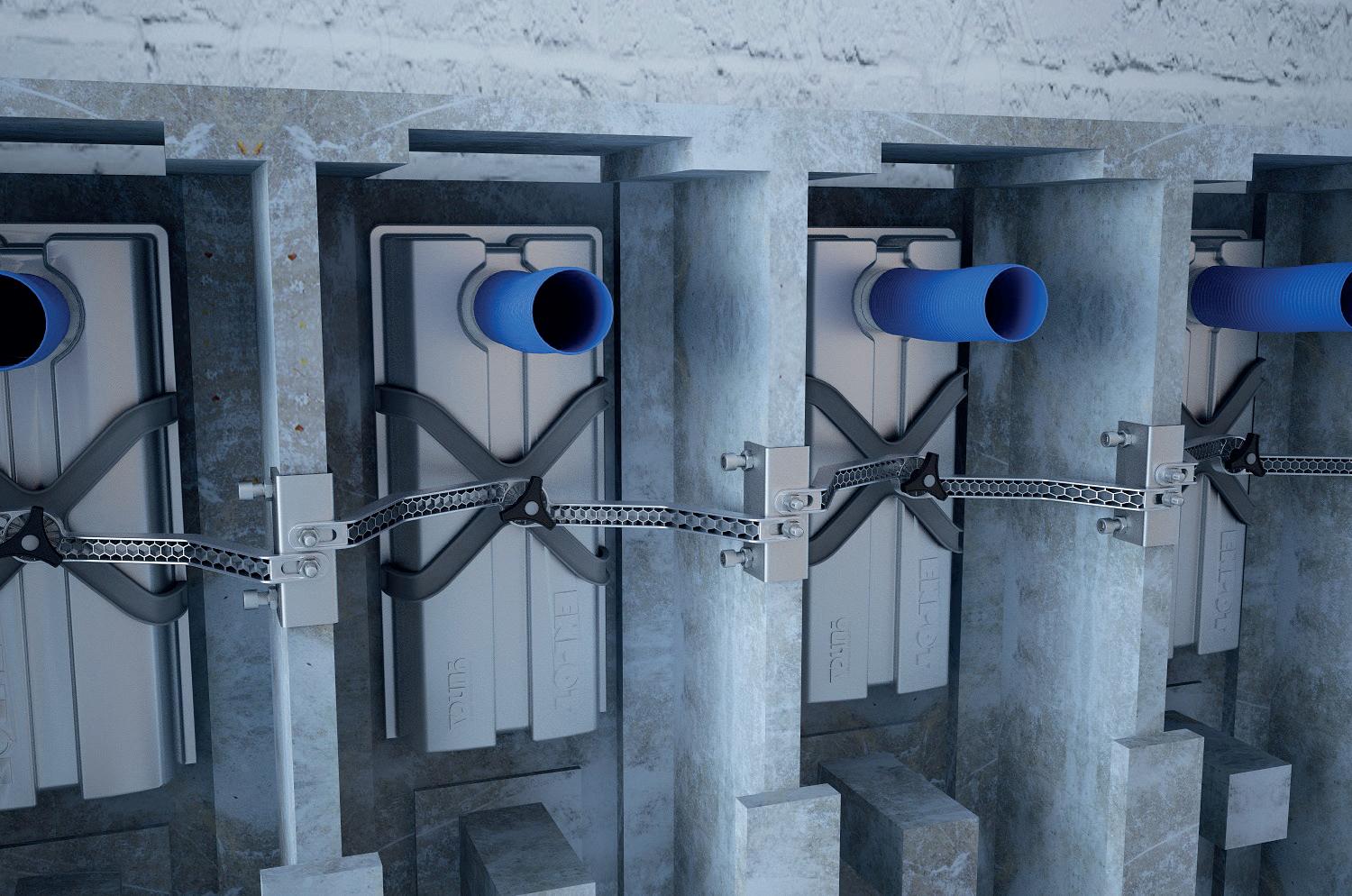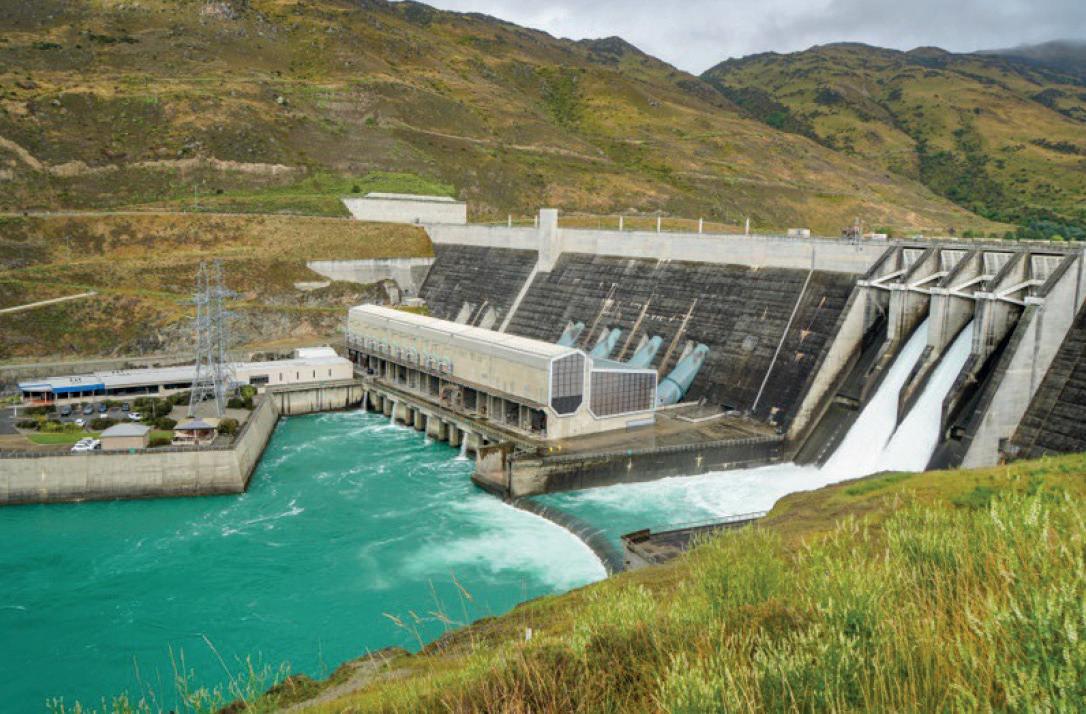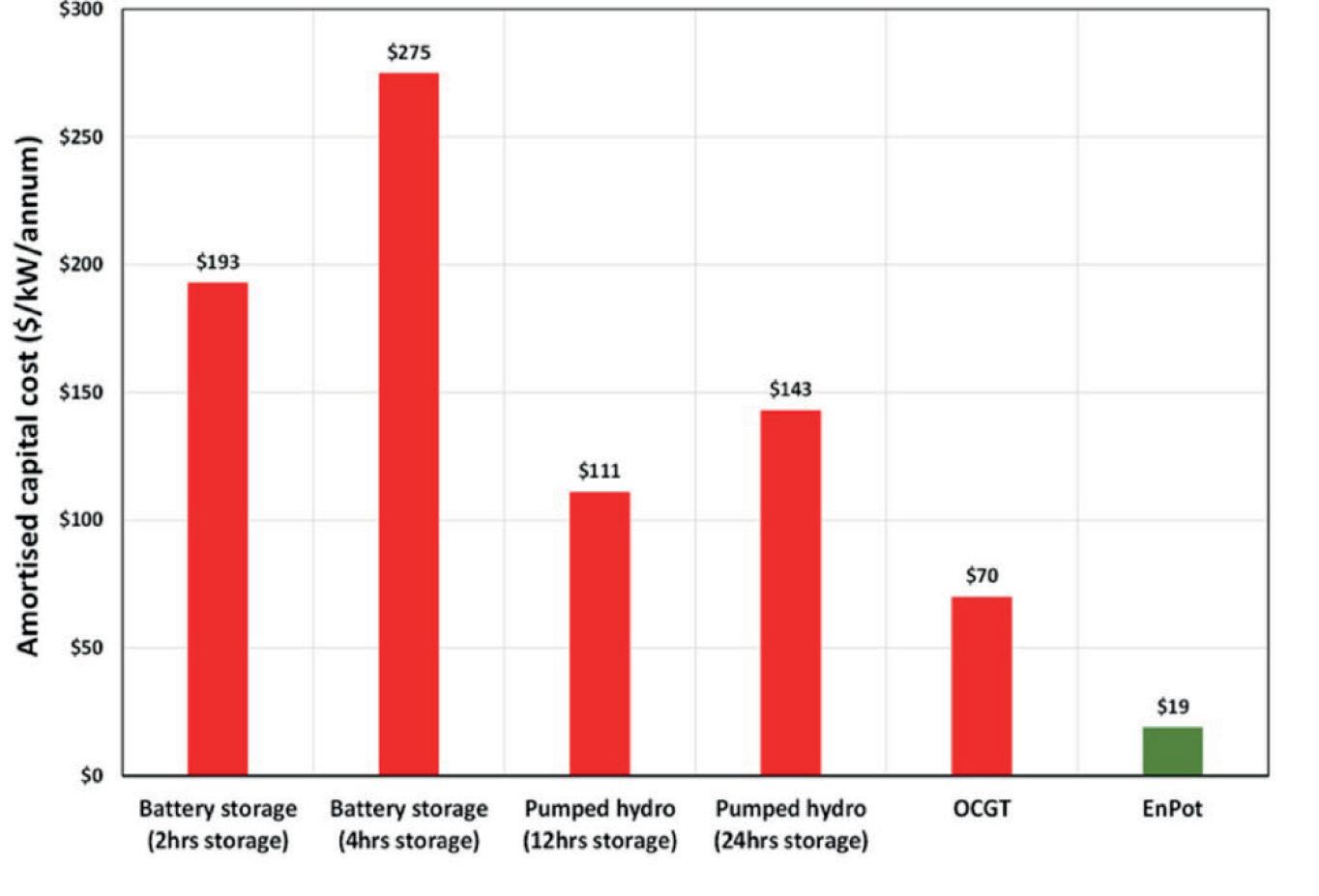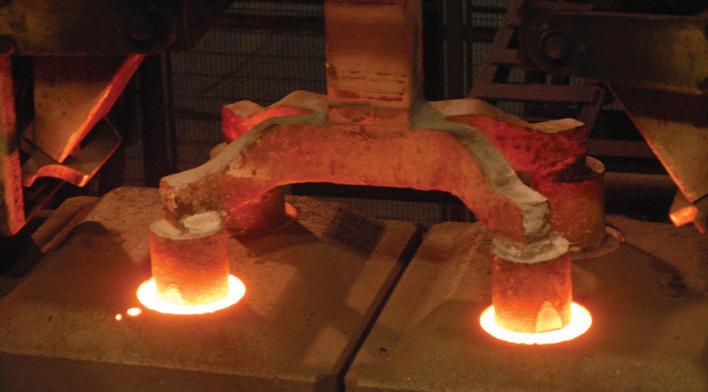9 minute read
Throwing off the shackles
How technology can transform aluminium smelters into flexible power users
We talk often of the environmental credentials of our wonder-metal, aluminium. Strong, infinitely recyclable, lightweight and loved by electric vehicle manufacturers the world over. It is the process required to create aluminium that needs to decarbonise. Depending on what country the metal originates from, the timeframe for that transformation is, well… yesterday.
We spoke with technology company EnPot’s CEO Karyna Young and Chief Technology Officer Dr. Nick Depree about what it will take to seamlessly shift smelters into the brave new world of low emissions aluminium production.
The time is now
A few years back, the words “low emissions aluminium production” were reserved for hydro-powered aluminium smelters only. And that was okay. Fast-forward to today however and the picture is changing.
The production of the electricity consumed during the smelting process generates 60% of the sector’s 1.1 billion tonnes of CO2-equivalent emissions1 . Renewable energy is now rapidly replacing fossil-fuel power plants. Decarbonising power generation will, in turn, rapidly decarbonise aluminium production and emissions along with it.
“Aluminium smelting as we know it today can and will decarbonise. We are seeing this already. We have such a significant opportunity to bring emissions under control through supporting the transition away from power generation via fossil fuels,” said Dr. Nick Depree. This is not a case of sitting back and waiting for the world’s previously untapped wind, solar and hydro to be harnessed for energy. There are tangible steps that aluminium smelters are taking now, to not only take advantage of variable renewable energy (VRE), but to also to help firm VRE in national electricity grids.
Step one is enabling flexible power use at smelters through modulation. “We are seeing increased appetite for modulation from smelters right around the world. From some just wanting to dip their toe in the water by making small changes, to smelters incorporating power modulation technology across their whole operation”, says Dr Depree.
The eponymous EnPot technology (short for Energia Potior: “to master energy”) is an innovative technology that enables smelting cell heat balance control at aluminium smelters. It was extensively developed by the Light Metals Research Centre at the University of Auckland, New Zealand since 2004, and has now been commercialised by EnPot Ltd.
EnPot technology
Heat balance control allows smelter power usage to be modulated both upwards or downwards by up to 30%, without disturbing the delicate heat balance required to make aluminium. This is made possible by retrofitting pot shells with enhanced temperature regulation via insulated heat-exchange jackets.
It’s a simple concept with significant impact. Enpot allows smelters to modulate power around +/-20% immediately and at any time, to work with power supply variability, and increase the use of VRE in their energy mix, as and when it makes sense for them. This is of immense value to electricity grids grappling to support, or ‘firm’, a greater mix of intermittent renewable energy sources such as wind, solar, tidal and hydroelectric power.
A larger modulation window of up to 30%, when utilising some process changes, can be used as a solution for longer term issues such as dry periods in hydro generation. Additionally, smelters can offer full power curtailment in times of emergency power shortages for several hours, much longer than at present without this insulating ability.
The great balancing act
It is the firming of unpredictable clean energy sources that has become the main cost in renewable dominated energy grids, not to mention the technical difficulty that is often involved. Firming of VRE can be performed by several technologies such as battery storage, pumped and stored hydro or gas turbine peaking plants.
“Grids these days are more of a balancing act than ever before”, said Karyna Young, CEO of EnPot. “We’re seeing an increase in power cuts, or “emergency outages” in previously secure power grids, as some operators struggle to effectively respond

Detailed image of EnPot Shell Heat Exchanger Technology Ducted network for a section of aluminum smelting cells with installed EnPot heat exchangers


New Zealand’s Waitaki Dam is one of more than 100 hydroelectric power plants in use in the country. Cost comparison of VRE firming technologies – battery storage, pumped hydro, and EnPot

to the fluctuations in demand and supply of variable renewable energy During summer heatwaves and winter deep freezes, these cuts can have potentially catastrophic consequences.
“Aluminium Smelters are usually the largest single users on a local power grid, so this puts them in a valuable position if that load can be made flexible. All of a sudden, being one of a local grid’s largest customers can be turned into a major competitive advantage that is of immense value for grid operators. It’s a win-win for all players,” said Karyna.
For the world’s leading economies, having a constant supply of reliable electricity has always been a given. Economic success relies on power, and as the energy transition picks up pace, the phrase “grid resilience” is becoming an increasingly hot topic. Last year, for example, China had power outages in as many as 20 provinces as the country struggled to balance its electricity supply due to coal shortages amid a surge in power demand.
According to the International Energy Agency (IEA), almost a third of the world’s electricity generation comes from renewable sources, and that figure is set to grow by 8% in 2022. This is good news, as long as existing grids can integrate these new energy sources with well thought out firming solutions. Demand side response, where available, is an important tool which can be leveraged without investing heavily in expensive battery energy storage.
A just transition
The concept of a “just transition” means the transformational change required to meet the goals of the 2015 Paris Agreement, including a complete revamp of our energy system, should leave no-one behind. A sustainable future can not be for rich countries only. Money matters, and clean reliable electricity also needs to be affordable electricity.
The last year has seen a significant shift in public perception and political motivation globally regarding decarbonisation of industries and reduction in fossil fuel usage. This has led to significant chunks of corporate and public funding being made available for decarbonisation initiatives.
“It is not lost on forward-thinking governments, determined to fast-track their countries’ decarbonisation agenda, that variable renewable energy via smelter modulation is a cost-effective and rapid way to green their grids,” said Karyna. “EnPot technology is currently operating at TRIMET aluminium smelters in Germany, but its potential application is huge, with 43 of the world’s 195 countries boasting aluminium smelters. Those that choose to operate flexibly can offer a competitive solution for power grids wanting to increase their use of renewable energy,” she said.
A 2019 IEA report on China Power System Transformation and advanced flexibility options directly refers to EnPot, suggesting that conversion of China’s smelters with EnPot technology would lead to a significant reduction in China’s CO2 emissions. The IEA recommends; “specific government interventions may be necessary to enrol particular largerscale load resources (e.g. aluminium smelters), including the design of financial incentives for retrofits and/or participation requirements2 .”
EnPot technology shows the potential to be the cheapest method to firm up to 40% of smelter energy needs (by 20% up or down on demand) and the capability to provide energy services similar to both grid-scale batteries (100% of capacity for a short duration) and pumped hydro (lower
capacity for longer duration). This chart shows an amortised cost comparison of several technologies available for VRE fi rming.
A tale of two energy markets
EnPot has recently modelled two very different energy markets3, one coal dominated and another hydro-dominated. Both show there is signifi cant available value in the market when generating capacity, and hence power price, is highly variable. This value is only likely to increase as VRE replaces coal and gas for either base load or peaking generation.
There are many ways in which the value of smelter modulation can be captured by the smelters and grid operators, once EnPot has been installed. Some smelting companies are already experienced power traders and can buy and sell power and fi rming capabilities to economic advantage, trading this off against varying metal production.
Many smelters, however, would prefer to continue steady operation as often as possible, maximising their metal production, and modulating when requested by grid operators. In this scenario, they would more likely negotiate either scaled payments for providing this service on demand or negotiate overall lower annual power prices given the value to the grid operators - such as the avoided cost of investing in other fi rming methods.

Firming power grids for decarbonisation
“EnPot technology is the cheapest and easiest method to start fi rming variable power generation, because it utilises massive existing assets and infrastructure in aluminium smelters,” said Karyna Young. Of course, fi rming power grids has a great advantage beyond the economic benefi ts to smelters and generators – the key goal is to reduce the ‘scope 2’ carbon emissions accrued from power generation.
“Combined with increased governmental, corporate, and consumer desires to decarbonise, smelter power modulation as a tool becomes a very attractive proposition,” Karyna concludes.�
https://energiapotior.com/
1. https://international-aluminium.org/resource/aluminium-sector-greenhouse-gas-pathways-to-2050-2021/ (2018 data) 2. China Power System Transformation, IEA, 2019 3. Depree, N.B., Thomas, D.P., Wong, D.S. (2022). The Contribution and Economics of Demand Side Response Towards Decarbonizing the Aluminium Smelting Industry. In: Eskin, D. (eds) Light Metals 2022. The Minerals, Metals & Materials Series. Springer, Cham. https://doi.org/10.1007/978-3-030-925291_74
D-MAX GW ASX
ANUDE STUB COATING

High economy coating for anode stubs based on a low-maintenance dispersion liquid
• Better cell efficiency, lower electrical energy consumption • No sediments in dipping tank • No need for agitation and recirculation in dipping tank • Enhanced bath maintenance • Enhanced release properties • Extended stub life • Reduced costs for removing ‘stickers’ and replacing anodes • Safe working environment

D-MAX GW ASX
D-MAX GW ASX is a state of the art graphite coating for anode stub assembly. Thanks to its properties it offers many advantages before, during and after the aluminium smelting process. The dispersion will remain stable during storage and operation, reducing need for tank maintenance and forms a solid and uniform coating on the anode pins as a result of excellent wetting properties. Not only will this ease stripping after the process but, more importantly, results in cost saving because of lower voltage drop during electrolysis. Additionally, stub life will be increased resulting in large cost savings on material, time and repair.
• Cost saving benefits in various operations • Guaranteed and increased safety • Versatility • Lower carbon footprint
















